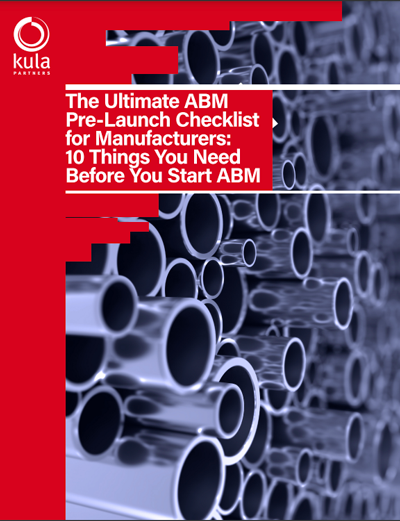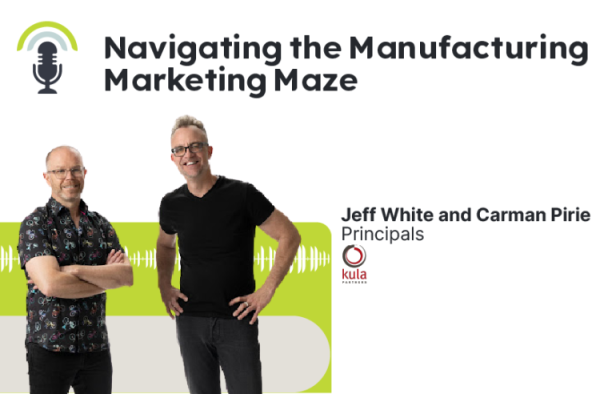An account-based approach to marketing is critical to maximizing your revenue potential within niche B2B markets. If you’re planning to set your ABM strategy and start launching targeted campaigns, this checklist will help you ensure you’re in the best possible position to achieve ABM success.
Paid search can be a powerful lead-generation tactic for manufacturers and other industrial B2B organizations. Over the last decade-plus, we’ve seen properly executed paid search programs deliver over 1000X return on ad spend and generate millions of dollars in pipeline value. We’ve also seen a lot of industrial marketers get it wrong. And usually, that’s […]
A short time ago Jeff and Carman, our founders and hosts of The Kula Ring, joined Chris Moody on The Sunnyside Up Podcast. If you are unaware, it is a wonderful podcast created by our partners at Demandbase. As a market leader in the Account Based Marketing software space, the folks at Demandbase certainly understand […]
For newly developed or redeveloped manufacturing brands, digital considerations should be baked into visual design elements. However, legacy manufacturing brands may encounter issues that prevent them from being seamlessly integrated with the current standards of digital platforms. For legacy manufacturing brands where visual elements originated in print, marketers and related stakeholders need to become aware […]
Manufacturing marketers are turning their attention to Account-Based Marketing to augment more traditional digital marketing channels. If you’re still learning about what ABM is and why you might need it, have a read of this account-based marketing blog post that our own Floyd Peyton wrote over three years ago. While the technologies may have evolved since then, the description of the methodology […]
Watch the webinar co-hosted by Terminus and Kula Partners to learn how an ABM strategy can help you execute highly targeted, personalized marketing to your most qualified accounts and the individuals within them.
Is your B2B manufacturer’s marketing and sales strategy shaped by “The Funnel”? The funnel model is a modern mainstay, suggesting that marketing’s job is to bring prospects into the “top” of the funnel through a variety of tactics, convert them into leads, qualify and handle them, pass them to sales to assess the opportunities, and […]
This article was originally published on the Gardner Business Media Marketing Blog. Attending and sponsoring trade shows and other events has been an effective marketing tactic for manufacturers for a long time. These events give you the opportunity to meet new contacts, generate leads, engage with the industry, and put your brand’s best foot forward. However, […]
Happening September 16-18, 2019 in Chicago, Illinois, ManufacturED is the Manufacturers Alliance for Productivity and Innovation (MAPI)’s premier event—designed to inspire strategic thinking about what it means for manufacturers to thrive in today’s digitally connected world. The Kula Ring podcast is pleased to be the official Media Sponsor of ManufacturED 2019. Hosts and Kula Partners cofounders Carman Pirie and Jeff W. […]








